Fractal dynamics in physiology: alterations with disease and aging
- PMID: 11875196
- PMCID: PMC128562
- DOI: 10.1073/pnas.012579499
Fractal dynamics in physiology: alterations with disease and aging
Abstract
According to classical concepts of physiologic control, healthy systems are self-regulated to reduce variability and maintain physiologic constancy. Contrary to the predictions of homeostasis, however, the output of a wide variety of systems, such as the normal human heartbeat, fluctuates in a complex manner, even under resting conditions. Scaling techniques adapted from statistical physics reveal the presence of long-range, power-law correlations, as part of multifractal cascades operating over a wide range of time scales. These scaling properties suggest that the nonlinear regulatory systems are operating far from equilibrium, and that maintaining constancy is not the goal of physiologic control. In contrast, for subjects at high risk of sudden death (including those with heart failure), fractal organization, along with certain nonlinear interactions, breaks down. Application of fractal analysis may provide new approaches to assessing cardiac risk and forecasting sudden cardiac death, as well as to monitoring the aging process. Similar approaches show promise in assessing other regulatory systems, such as human gait control in health and disease. Elucidating the fractal and nonlinear mechanisms involved in physiologic control and complex signaling networks is emerging as a major challenge in the postgenomic era.
Figures
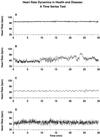

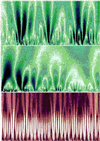
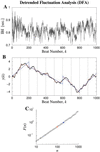
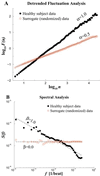


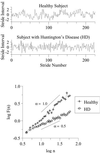
References
-
- Walleczek J., (1999) Nonlinear Dynamics, Self-Organization, and Biomedicine (Cambridge Univ. Press, Cambridge, U.K.).
-
- Goldberger A. L. (2001) Am. J. Respir. Crit. Care Med. 163, 1289-1290. - PubMed
-
- Bassingthwaighte J. B., Liebovitch, L. S. & West, B.J., (1994) Fractal Physiology (Oxford Univ. Press, New York).
-
- Winfree A. T. (1994) Nature (London) 371, 233-236. - PubMed
-
- Glass L. & Mackey, M. C., (1988) From Clocks to Chaos: the Rhythms of Life (Princeton Univ. Press, Princeton).
Publication types
MeSH terms
Grants and funding
LinkOut - more resources
Full Text Sources
Other Literature Sources
Medical

